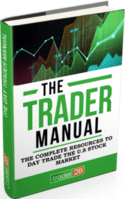Most aspiring traders are out there to get financial freedom and security, but day trading comes with some risks, such as losing thousands of dollars in a short time. However, you can make up to six figures in a few hours with momentum day trading.
More so, to become a successful funded trader, you have to adopt a trading strategy. There are different kinds of day trading strategies and trading systems, underlying each of them is a set of rules. The rules differ from system to system, but in essence, they are all variations of the same system. one of the most profitable trading strategies is Momentum day trading
Momentum day trading
Momentum day trading is a strategy that uses price movement as the basis for opening trading positions. In essence, it is the practice of buying and selling assets based on the strengths of price trends. As a momentum day trader, your major focus is always the stocks in the news because they are the volume movers of the day.
As a beginner, one of the few things you should hold on to is that the only way to make a profit is by finding stocks that are moving. A stock moves over 20% more every day, all you have to do is find the stocks before they move away. If you want to make a profit out of momentum day trading, you need a stock that moves, chopping stocks are useless so you have to avoid them.
If you take a look at any given stock market chart, you’ll notice that there is a series of ups and downs. You‘ll notice that rarely does the currency or equity oscillate up and down statically. There are always larger overall rising or falling trends. This larger trend is the stock market, equivalent to Newton’s First Law of Motion: objects that are in motion tend to stay in motion unless acted upon by some external force.
Similarly, in the stock market, the equivalent rule is that a rising stock value may have many small ups and downs but generally within a larger, more consistently rising value that continues until market events or external political or economic events bring the trend to a halt. A winning trade has a certain momentum that doesn’t guarantee but suggests that the next move will be in the same direction.
Determining how to profit from this observation for momentum day trading is the subject of many books, speeches, software implementations, and seminars. Some of these strategies are available for a significant fee, but underlying them all are some well-known market facts available without cost
Advanced Trading Strategies Versus Winning Trading Strategies
Some traders use systems that require observation and trading adjustments every few seconds to every few microseconds (most of these computerized and have computational requirements well beyond even the most powerful personal computers). Others employ trading systems that encourage trading on 5 minutes to 15 minutes charts or daily charts. Beginners who try to implement these systems often don’t fare well, first because in general, these shorter-term systems require more experience and trading skill, but also because when trading on a short-term chart, the trader may inadvertently be trading against the larger, more significant overall trend – the kind of trend that weekly charts are more likely to reveal. Trading against the trend, needless to say, can be a recipe for disaster.
Trading System
when you are doing momentum day trading, there are only two crucial times of the day. The first and last hour of trading. Systems based on weekly charting are a less labour-intensive way of participating in the stock market. Assuming you have an excellent understanding of the stock market and various risk reduction strategies, you’ll want to begin to develop your weekly trading system by looking at the charts. These are mostly generic charts, widely available online from brokerages and trading houses without cost. A detailed discussion of each of these indicators is beyond the scope for this article, but each of the following indicators is linked to an article describing them in greater detail.
Also read: 5 Habits of a Successful Funded Trader – Become a Day Trader
Here, we’ll go over the basic idea of underlying each of the indicators from the chart.
Moving Averages: This is the simplest and most popular of all trend indicators. Moving average charts plot the rise or fall of the currency value within a given time frame. When a currency value rises or falls above or fall of the price over a given time frame. When a price value rises or falls above or below the given average within that frame, this signals a buy or a sell.
Stochastic: This differs from a moving averages chart in that it doesn’t look primarily at the quantity of the rise or fall, but rather its velocity. How fast is this occurring? If the rate of rising is increasing, this suggests the price has an underlying strength that will likely continue, at least until something happens that stops it. If the currency rise is losing momentum, this may indicate it’s time to sell.
Bollinger Bands: A chart that is related to a moving average chart but uses a more complicated charting process that incorporates standard deviation in its calculation. Not all traders will be interested in the complexities of this chart, which is not that far removed from a moving average chart, but if you are interested in statistics, mastering Bollinger Bands charting could be an additional valuable assessment tool.
Also read: Is Paper Trading Right For You?
Using Momentum Charts for momentum day trading.
One way to begin using these charts is with the simplest of strategies, the moving average. If the stock price rises above a moving average for a given period, this is a buy signal, although a rather primitive one. If the stock price rises above the move averages of two charts of the same stock price but with different periods, this is a stronger buy signal. Using a Relative Strength chart, you can compare its rise with the rise of other stock prices.
A comparison with the moving averages of another related stock can provide additional insight into the relative strength of your selected stock.
It’s not often that all momentum indicators point in the same direction: sometimes you’ll need to wait until in aggregate they’re more favourable. The main thing to remember is to trade small and be patient. If you normally trade stocks, reduce your position size because weekly charting is easy to manage, but the price differences can be significantly great than when trading with charts over shorter periods. As with all trading generally, use stops set the target and stick to your trading plan.





